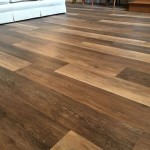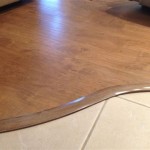Vinyl flooring is a great choice for homes and businesses alike. It’s durable, easy to clean and maintain, and adds a modern, stylish look to any room. But to get the perfect fit, you’ll need to know how to cut vinyl flooring properly. Fortunately, it’s not as difficult as it might seem. In this comprehensive guide, we’ll show you the best techniques and tools to use when cutting vinyl flooring.
1. Choosing the Right Tool for the Job
The type of tool you use to cut your vinyl flooring will depend on the type of vinyl and the size of the cuts you need to make. For most vinyl flooring, a utility knife is the best choice. For larger, more precise cuts, you may want to use a circular saw. If you’re using a circular saw, make sure it has a carbide-tipped blade designed for cutting vinyl.
2. Preparing Your Work Space
Before you begin cutting, you’ll need to make sure your work space is properly prepared. Start by laying down a large drop cloth or tarp to protect your flooring and any nearby furniture, walls, or fixtures. You should also make sure you have enough space to move around and see your cuts clearly. Finally, make sure you have all the tools and materials you’ll need close at hand.
3. Marking and Measuring
Once your work space is ready, it’s time to mark and measure your cuts. Start by measuring the width and length of the area you need to cut. Then, use a ruler and a pencil to mark the measurements along the top and sides of the vinyl. Make sure your measurements are accurate, as even small errors can affect the fit of your flooring.
4. Making Straight Cuts
When making straight cuts with a utility knife, start by scoring the vinyl along the marked lines. You should make several passes over the same area to ensure a clean, even cut. Then, when you have finished scoring, you can use a straight edge to help you press down and cut through the vinyl. If you’re using a circular saw, make sure you take your time and follow the marked lines carefully.
5. Making Notches and Curves
Notches and curves can be tricky to cut, but with a little patience and the right tools, it’s possible. For notches, start by marking the area you need to cut and then use a jigsaw to slowly make the cuts. For curved cuts, use a jigsaw to make the initial cuts, then use a file or sandpaper to smooth the edges.
6. Finishing Your Cuts
Once your cuts are complete, you’ll need to remove any sharp edges or burrs. Use a file or sandpaper to carefully remove any rough edges, then use a damp cloth to clean the area. This will help ensure a tight fit when you lay down your vinyl flooring.
7. Installing Your Vinyl Flooring
Once your cuts are finished, you’re ready to install your vinyl flooring. Start by laying out the pieces in the correct order and making sure all the cuts fit together properly. Then, use a roller or a heavy object to press down the vinyl and ensure a tight fit. Finally, you can use a sealant to help protect your flooring and make sure it stays in place.
Cutting vinyl flooring doesn’t have to be complicated. With the right tools and techniques, you can create perfect, professional-looking cuts that will make your floor look great. Use this guide to help you get started and you’ll be cutting vinyl like a pro in no time!










:max_bytes(150000):strip_icc()/easy-install-plank-vinyl-flooring-1822808-07-9e82b716c3e94264b4a6084e174e9aeb.jpg)




Related Posts








